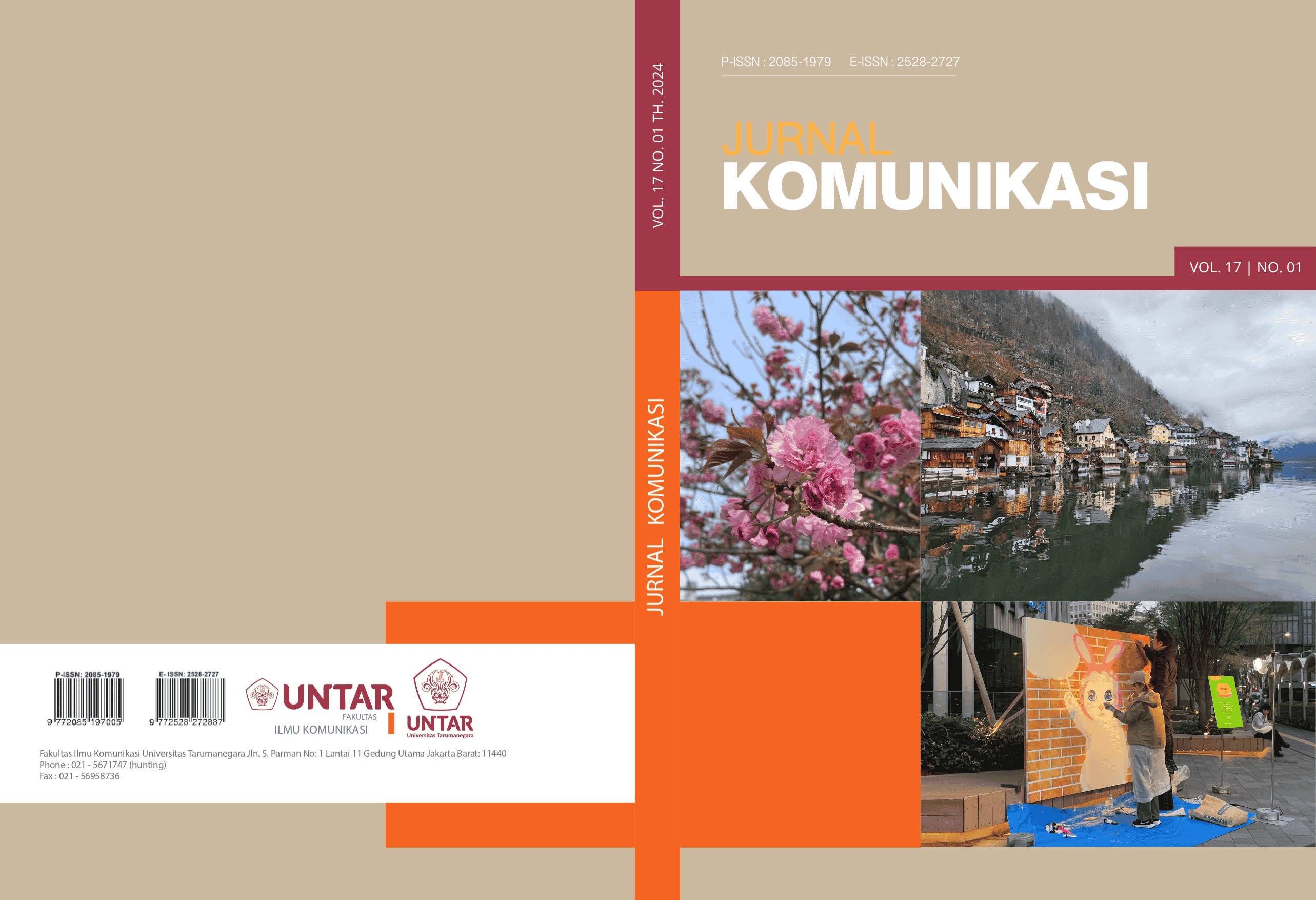Enhancing Stakeholder Communication and Management Strategies in Religious Tourism: A Case Study of Pura Parahyangan Agung Jagatkarta
Main Article Content
Abstract
The utilization of places of worship as sustainable religious destinations necessitates not only the strategic management of communication with relevant stakeholders but also the preservation of cultural heritage, belief systems, and communal traditions. Furthermore, it requires safeguarding historical monuments and religious rituals while promoting environmental sustainability to maintain both the ecological integrity and the spiritual sanctity of the site. This research focuses on identifying the key stakeholders and evaluating the communication strategies employed between the management of the religious tourism site and other involved parties at Pura Parahyangan Agung Jagatkarta. Utilizing a sequential mixed-methods approach, which combines qualitative and quantitative research, data was gathered through comprehensive interviews and observations. This was further enriched by a SWOT analysis to establish effective management strategies. The Pentahelix model was applied to highlight the roles of five primary stakeholders: government, academia, community, business, and media. Findings from the IFAS and EFAS analyses suggest that while the natural allure of sites like Pura Parahyangan Agung Jagatkarta is significant, it must be matched by enhancements in infrastructure and accessibility. Managing religious tourism destinations such as Pura Parahyangan Agung Jagatkarta requires close collaboration among government, local communities, and businesses to optimize resources, improve infrastructure, and enhance accessibility. Sustainable management must address visitor surges, provide education on local rules and traditions, and preserve the sanctity and sacred atmosphere of the site. These measures ensure that the destination supports tourism while maintaining its cultural and religious values.
Article Details

This work is licensed under a Creative Commons Attribution-ShareAlike 4.0 International License.
This work is licensed under a Jurnal Komunikasi Creative Commons Attribution-ShareAlike 4.0 International License.References
Bungin, B. (2015). Komunikasi Pariwisata, Tourism Communication. Pemasaran dan Brand Destination (2nd ed.). Kencana.
Chauhan, E. (2022). Residents’ Motivations to Participate in Decision-Making for Cultural Heritage Tourism: Case Study of New Delhi. Sustainability (Switzerland), 14(14). https://doi.org/10.3390/su14148406
Clarke, A., & Raffay, Á. (2015). Stakeholders and co-creation in religious tourism and pilgrimage. In Religious tourism and pilgrimage management: an international perspective (pp. 160–172). CABI. https://doi.org/10.1079/9781780645230.0160
Damanik, J. (2013). Pariwisata Indonesia: Antara Peluang dan Tantangan. Pustaka Pelajar.
Freeman, R. E. (2015). Strategic Management: A Stakeholder Approach. Cambridge University Press.
George, T. (2023, June 22). Mixed Methods Research | Definition, Guide & Examples. Scribbr - Scriptie Laten Nakijken. https://www.scribbr.com/methodology/mixed-methods-research/
Guth, D., & Marsh, C. (2000). Public Relations: A Values-driven Approach. Allyn and Bacon. https://books.google.co.id/books?id=ckECAAAACAAJ
Hasanah, I., Susanti, H., Riyanto, R., & Setyowardhani, H. (2018). Heritage Tourism Development: Concept of Community-based Tourism in Megalithic Site of Gunung Padang. In Proceedings of the 1st Unimed International Conference on Economics Education and Social Science. SCITEPRESS - Science and Technology Publications. https://doi.org/10.5220/0009502004600465
Kagungan, D., Duadji, N., Meutia, I. F., Jurusan, D., & Negara, A. (2021). Kolaborasi Model Pentahelix Dalam Kebijakan Pengembangan Industri Pariwisata Di Kabupaten Pesawaran.
Kurniawati, I., Murwaningsih, T., & Susilowati, T. (2018). Prosiding Seminar Nasional Pendidikan Administrasi Perkantoran (SNPAP). www.snpap.fkip.uns.ac.id
Leman, L. A. (2018). Kolaborasi antar Stakeholders dalam Pengembangan Pariwisata Religi Sunan Giri di Kabupaten Gresik. https://api.semanticscholar.org/CorpusID:169569072
Lin, C.-P. (2021). The salience of stakeholders in religious tourism: A case study of the Dajia Mazu pilgrimage. Annals of Tourism Research, 86, 103091. https://doi.org/10.1016/j.annals.2020.103091
Maulidia, I., Siregar, M. R. A., & Jayawinangun, R. (2022). Bagaimana komunikasi antara pengelola dengan pemerintah dalam membangun citra destinasi wisata kampung tematik ? Jurnal Penelitian Sosial Ilmu Komunikasi, 6(1), 54–62. https://doi.org/10.33751/jpsik.v6i1.5313
Mowforth, M., & Munt, I. (2015). Tourism and Sustainability. https://perpus.univpancasila.ac.id/repository/EBUPT190745.pdf
Panggabean, M. M. (2021). Strategi Pemerintah Daerah dalam Mengembangkan Wisata Halal di Yogyakarta (Studi Kasus: Dinas Pariwisata). Universitas Muhammadiyah Yogyakarta.
Putra, D. P. B. (2020). Partisipasi masyarakat lokal dalam pengembangan Desa Wisata Carangsari. Jurnal Masyarakat Dan Budaya, 22(2), 1–16. https://doi.org/10.14203/jmb.v22i2.838
Ruhanen, L. (2009). Stakeholder Participation in Tourism Destination Planning Another Case of Missing the Point? Tourism Recreation Research, 34(3), 283–294. https://doi.org/10.1080/02508281.2009.11081603
Saleh, M. H., Garaibeh, A. T., Shehadeh, A., & Jaber, J. J. (2019). The Role of Tourism Activity in Economic Growth by Using Some Econometric Models Evidence from Jordan. Modern Applied Science, 13(6), 1. https://doi.org/10.5539/mas.v13n6p1
Satrio Wibowo, M., & Arviana Belia, L. (2023). Partisipasi Masyarakat dalam Pengembangan Pariwisata Berkelanjutan. 6, 2023.
Silva, G. B. da, & Marques Junior, S. (2016). Fatores que afetam o apoio dos residentes para o desenvolvimento do turismo religioso: o caso de Santa Cruz (RN), Brasil. Revista Brasileira de Pesquisa Em Turismo, 10(3), 497–515. https://doi.org/10.7784/rbtur.v10i3.957
Stieb, J. A. (2009). Assessing Freeman’s Stakeholder Theory. Journal of Business Ethics, 87(3), 401–414. https://doi.org/10.1007/s10551-008-9928-4
Utama, I. G. B. R., & Se, M. A. (2015). Pengantar industri pariwisata. Deepublish.
Wiarsini, N. K. A., & Dane, N. (2022). Strategi Pengembangan Potensi Daya Tarik Wisata Spiritual Pura Siwa di Desa Pujungan, Kecamatan Pupuan, Kabupaten Tabanan. SISTA: Jurnal Akademisi Dan Praktisi Pariwisata, 1(2), 111–122.



